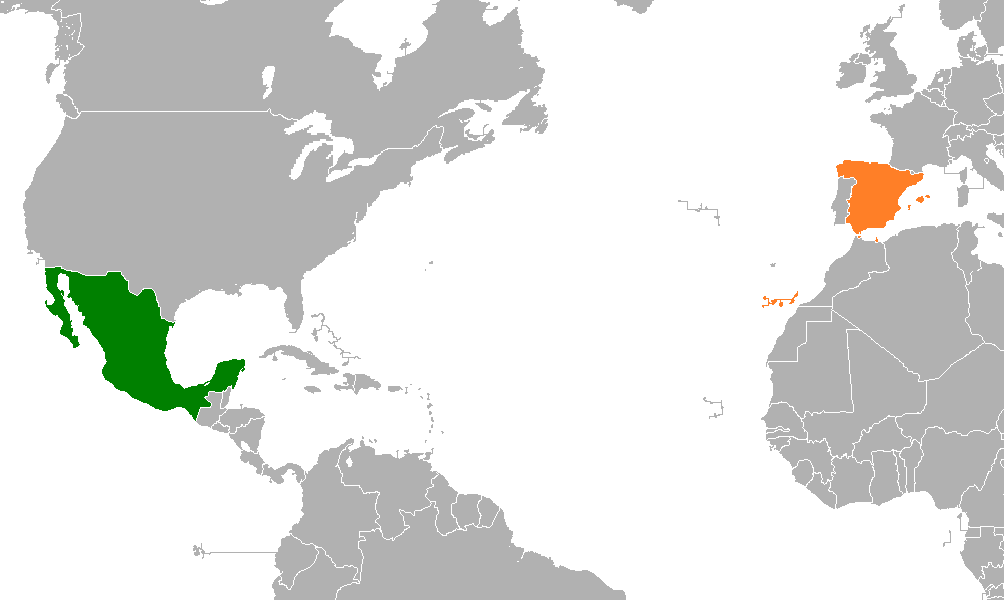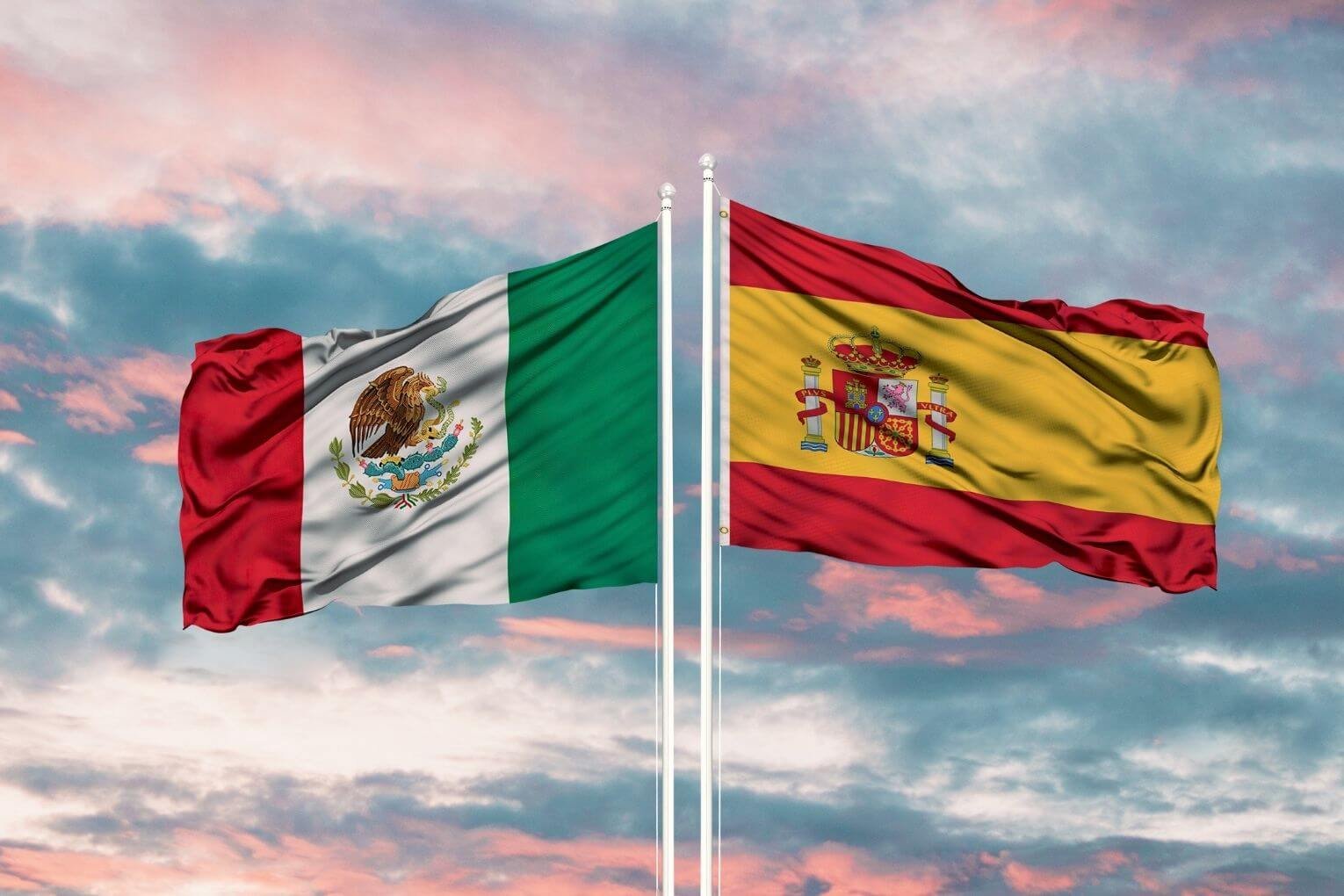Spanish ranks as the second most spoken native language globally, right after Mandarin Chinese, with about 580 million speakers worldwide. Spain and Mexico share this linguistic foundation but represent two completely different cultures separated by more than 5,000 miles of land and water.
The land we now call Mexico was once home to native civilizations like the Mayans and Aztecs. Spanish colonizers brought their language to handle administration and government affairs. This created a complex cultural relationship that still exists today. Spain covers 505,935 km² with 48 million people, while Mexico’s territory spans 1,964,375 km² and houses nearly 130 million inhabitants. On top of that, these nations show substantial differences in their linguistic landscape. Spain recognizes four official dialects (Castilian, Catalan, Galician, and Basque), while Mexico maintains 68 distinct native languages alongside its Spanish heritage. When we take a closer look at Spain and Mexico, we uncover fascinating contrasts in language, culture, business etiquette, and daily life that define these two influential Spanish-speaking nations.

Geographic and Historical Roots of Spain and Mexico
Mexico and Spain lie on opposite sides of the Atlantic Ocean. A distance of over 5,000 miles of land and water separates them. Their deep historical connections have shaped their modern identities, though this distance has created two distinct cultures despite their shared language.
Colonial history and language spread
Spanish influence in Mexico started in 1519 when Hernán Cortés led Spanish conquistadors to Veracruz’s shores. They conquered the Aztec Empire by 1521 and built Mexico City on what remained of Tenochtitlan, the Aztec capital. Spanish forces quickly took control of most indigenous tribes in southern Mexico and expanded their rule south to Guatemala and Honduras by 1525.
The Spanish crown established the Viceroyalty of New Spain in 1535 and appointed a viceroy to represent the king. Spain managed to keep colonial control for about 300 years until Mexico gained independence in 1821. Spanish influence grew through several channels:
- Military conquest and settlement
- Religious conversion through missionaries
- Administrative bureaucracy and governance
- Economic systems centered on mining and agriculture
Spanish colonizers found that there was immensely valuable silver mines in Zacatecas in 1546, with similar discoveries in Guanajuato and San Luis Potosí. This is a big deal as it means that New Spain became Spain’s main source of income in the eighteenth century, generating the equivalent of USD 1.50 trillion (in 1990 terms) in gold and silver.
Why does Mexico speak Spanish?
Spanish became dominant in Mexico because of specific language policies during colonial rule. The original plan in 1570 saw King Philip II make Nahuatl an official language alongside Spanish to aid communication with indigenous populations. Notwithstanding that, everything changed when King Charles II banned all but one of these languages throughout New Spain in 1696.
Spanish authorities suppressed indigenous languages through several methods:
- Schools that only allowed Spanish
- Religious conversion and teaching in Spanish
- Policies that favored Spanish speakers in governance and trade
- Punishment of rural village children who used indigenous languages
The Mexican government picked up on this approach after independence and promoted Spanish as the national language. Today, about 90% of Mexicans call Spanish their mother tongue. Six million Mexicans still speak one of 68 indigenous languages, with over one million speaking Nahuatl.
Geographic separation and its effect
The vast distance between Spain and Mexico has led to cultural differences. Mexico’s landscape presents unique challenges. Conquistador Cortés told King Charles V that New Spain’s terrain looked like crumpled paper.
Mexico covers 1,964,375 km² (758,449 square miles), making it almost four times bigger than Spain’s 505,990 km² (195,360 square miles). More people live in Mexico too – 128.6 million compared to Spain’s 47.4 million.
The country’s isolation helped different indigenous groups develop their own languages and customs. People spoke around 300 different languages within today’s Mexico before the Spanish arrived. These geographic divisions have made central control difficult, whether under Aztec, Spanish, or Mexican rule.
Geography also shaped how Spanish evolved in Mexico. Swedish linguist Bertil Malmberg found that Central Mexican Spanish has unique features. People pronounce consonants fully while vowels become weaker—a trait he links to Nahuatl’s influence.

Language Evolution: Spain Spanish vs Mexican Spanish
Spanish spoken in Spain and Mexico shares the same roots but has developed differently during five centuries of separation. These variations extend beyond accents and include pronunciation, grammar, and everyday usage patterns that help identify speakers from each country.
Pronunciation differences: ce, ci, z
Spain Spanish and Mexican Spanish differ most noticeably in their consonant pronunciation. Spanish speakers in central and northern Spain use what linguists call ceceo – they pronounce the letters ‘z’ and ‘c’ (before ‘e’ or ‘i’) with a soft “th” sound like the English word “thing”. Mexican Spanish speakers use seseo, where these same letters make an “s” sound.
You can hear these differences in everyday words:
| Word | Spain Pronunciation | Mexican Pronunciation |
|---|---|---|
| Cerveza (beer) | ther-ve-tha | ser-ve-sa |
| Gracias (thank you) | gra-thee-as | gra-see-as |
| Barcelona | bar-the-lo-na | bar-se-lo-na |
Spanish speakers from Spain also pronounce the letters ‘j’ and ‘g’ (before ‘e’ and ‘i’) with a stronger, more guttural sound that resembles the “ch” in the Scottish word “loch.” Mexican speakers use a softer sound like the English ‘h’.
Grammar: vosotros vs ustedes
The biggest grammatical difference between Spain and Mexican Spanish lies in their second-person plural pronouns. Spain uses a two-tiered system: vosotros/vosotras for informal situations and ustedes for formal contexts. Mexican Spanish uses ustedes exclusively for both formal and informal plural address.
This difference requires completely different verb conjugations:
“Do you all speak Spanish?”
- Spain: “¿Vosotros habláis español?”
- Mexico: “¿Ustedes hablan español?”
Mexicans understand vosotros from Spanish literature, media, and religious texts but never use it actively. Some regions in northern Mexico are so formal that children address their parents using usted.
Use of past tenses in daily speech
Spain and Mexican Spanish speakers handle recently completed actions differently. Spain’s Spanish speakers prefer the present perfect tense (he + past participle). Mexican Spanish speakers choose the simple past (preterite) tense in similar situations.
To cite an instance, see:
- Spain: “He visto un perro en el parque.” (I have seen a dog in the park.)
- Mexico: “Vi un perro en el parque.” (I saw a dog in the park.)
When talking about earlier events in the day:
- Spain: “Hoy no he desayunado.” (I haven’t eaten breakfast today.)
- Mexico: “Hoy no desayuné.” (I didn’t eat breakfast today.)
This pattern mirrors English usage and serves as a key dialectal marker between Spain and Mexico’s Spanish speakers. These linguistic differences reflect geographic separation, cultural divergence, indigenous language influences, and distinct historical developments over centuries.
Cultural Norms and Social Etiquette
Cultural etiquette shows fascinating contrasts between Spain and Mexico that go beyond language. These differences shape how people interact and do business. Anyone building relationships between these Spanish-speaking nations should understand these key contrasts.
Formality and greetings
Spanish and Mexican greeting styles highlight their unique cultural values. Mexican people tend to be warmer and more expressive than their Spanish counterparts. Most Mexicans prefer an abrazo (loose embrace) with a kiss on the right cheek once they know you. Spanish people take a more reserved approach at first.
Body language tells a different story in each culture. Mexican people stand closer when they talk. They might see you as cold or unfriendly if you keep your distance. Mexican culture values physical connection – a gentle arm touch or holding shoulders shows appreciation during conversations.
Both cultures have their own formal address systems:
- Mexico: “Señor” (Mr.), “Señora” (Ms.) followed by surname
- Spain: “Usted” (formal “you”) traditionally showed social distance, though many Spanish people now use informal “tú”
Mexican culture shows extra respect by calling elders “Don” (Sir) or “Doña” (Ma’am) before their first name.
Punctuality in business and social life
Time management creates unexpected contrasts between these cultures. Mexican business culture values punctuality more than Spanish culture. Mexican work meetings should start on time.
Spanish business hours follow a unique rhythm. Work starts at 9 AM, breaks for lunch and “siesta” at 1:30 PM, then continues from 4 PM until 8 PM. This schedule explains why Spanish people eat dinner much later.
Social timing works differently in both places:
- Mexican parties: A 6 PM invitation means guests arrive around 7 PM, food appears by 8 PM, and the real party kicks off at 9 PM
- Spanish gatherings: Time stays flexible, and nobody worries much about punctuality
Communication styles: direct vs indirect
Communication styles show the biggest cultural gap. Spanish people speak their mind openly and show emotions freely. They value honest answers and expect others to be just as direct.
Mexican communication takes a gentler approach. People rarely say no directly or deliver sensitive news bluntly – that would seem rude. They prefer subtle hints and careful phrasing to avoid conflict. Someone might say “I’ll see what I can do” instead of “no”.
Even simple requests sound different. A Spanish person might say “Give me a coffee, please” (Ponme un café, por favor), while others might find this too direct. Spanish culture uses “please” and “thank you” less often. This isn’t rude – they just find too much politeness unnecessary in daily conversations.
Food, Festivals, and Daily Life
Spain and Mexico’s food and celebration traditions give us a great way to learn about how shared roots grew into unique cultures across the Atlantic.
Mexican cuisine vs Spanish Mediterranean diet
These two nations show their unique cultural development through their food. Mexican dishes center around corn, beans, chili peppers, tomatoes, and avocados—native ingredients that are the foundations of traditional cooking. Mexican food stands out with bold, spicy flavors created by mixing many spices and chili peppers. This makes it quite different from Spanish cooking.
Spanish cuisine takes after Mediterranean cooking styles. The Spanish use olive oil, garlic, tomatoes, and lots of seafood. Their cooking brings out natural flavors through special preparation methods. The Spanish love for olive oil, garlic, and saffron comes from Roman, Moorish, and Sephardic Jewish influences.
Unique celebrations: Día de los Muertos vs Las Fallas
Each country has colorful festivals that show their different cultural values. Mexico’s Día de los Muertos (Day of the Dead) remembers loved ones who have passed away with bright altars full of their favorite foods. Sugar skulls and Pan de Muertos (special bread) become offerings during this early November celebration. Mexican traditions follow the belief that “the dead die when the living forget them,” unlike Spain’s more serious way of remembering those who have passed.
Valencia’s Las Fallas festival shows Spain’s different approach to celebrations. The March event displays about 800 amazing sculptures made from wood and papier-mâché throughout the city. People admire these artistic works briefly before they burn them on March 19th in a grand “cremà” that represents cleansing and new beginnings.
Daily routines and lifestyle pace
Spain and Mexico differ most in their daily schedules. Spanish people eat lunch between 2-4 PM and dinner around 9-11 PM, which sets them apart from other Europeans. This schedule exists in part because Francisco Franco changed Spain’s time zone during World War II to match Nazi Germany—a change that still affects Spain today.
The traditional Spanish siesta (mid-afternoon break) isn’t as common in big cities like Madrid and Barcelona anymore. Still, many businesses close in the afternoon and open again later. Mexican people tend to arrive on time more often than Spanish people for business meetings. They see punctuality as an important professional quality.
Vocabulary and Expression Differences
Spanish speakers in Spain and Mexico show fascinating differences in their vocabulary despite sharing the same language foundation. Clear understanding of these variations helps you communicate better with both cultures.
Common words that differ
Cultural development has shaped unique vocabulary differences between Spain Spanish and Mexican Spanish. Simple everyday items often have different names in each country. A car is “coche” in Spain but “carro” in Mexico, while people call a cell phone “móvil” in Spain and “celular” in Mexico.
Here are some notable food-related differences:
| English | Spain Spanish | Mexican Spanish |
|---|---|---|
| Corn | Maíz | Elote |
| Juice | Zumo | Jugo |
| Potato | Patata | Papa |
| Peanut | Maní | Cacahuate |
| Sandwich | Bocadillo | Torta |
| Ice cream | Helado | Nieve |
Common objects also have distinct names:
| English | Spain Spanish | Mexican Spanish |
|---|---|---|
| Apartment | Piso | Departamento |
| Bus | Autobús | Camión |
| Pen | Bolígrafo | Pluma |
| Eyeglasses | Gafas | Lentes |
| Swimming pool | Piscina | Alberca |
Slang and regional expressions
Each country’s colloquial expressions reveal unique cultural elements. Mexicans use “¡Qué chido!” to describe something cool, while Spaniards say “¡Qué guay!” or “¡Qué chulo!”. They express embarrassment differently too – you’ll hear “dar pena” in Mexico and “dar vergüenza” in Spain.
Mexican Spanish has absorbed many words from Náhuatl, the Aztec language. Words like “chocolate,” “aguacate” (avocado), and “chicle” (gum) came from indigenous languages.
How to avoid misunderstandings
Most native Spanish speakers understand both vocabulary variants thanks to international media and entertainment. Some terms still need careful attention.
The verb “coger” (to take) needs special consideration. Saying “voy a coger el camión” (I’ll take the bus) works in Spain but has sexual implications in Mexico.
Here’s how travelers and business professionals can navigate both cultures:
- Add context around potentially confusing terms
- Use alternative descriptions when in doubt
- Remember that 90% of vocabulary stays similar between countries
You’ll become skilled at cross-cultural communication between Spain and Mexico by learning these vocabulary differences. This knowledge helps avoid awkward moments and shows appreciation for Spanish language’s rich diversity.
Summing all up
Spain and Mexico share a language and history, yet they have grown into distinctly different nations over five centuries. These cultures have developed their own unique identities and practices despite Spanish being their main language. The 5,000-mile distance and contrasting landscapes have played a significant role in shaping their separate paths.
The language differences between Spain and Mexico go beyond simple accent variations. Distinct pronunciation patterns and grammatical differences like “vosotros” versus “ustedes” serve as instant cultural identifiers. Spanish speakers from both countries use different words for everyday items – a glass of juice is “zumo” in Spain but “jugo” in Mexico, and a car is either “coche” or “carro.”
Social customs and communication styles reveal some of the most striking contrasts. Spaniards tend to be direct and emotionally expressive, while Mexicans value tactful communication and group harmony. These cultural patterns show up in business settings too, where each country’s approach to punctuality often challenges common stereotypes.
Spain and Mexico’s culinary traditions tell their own unique stories. Mexican dishes celebrate native ingredients with bold, layered flavors. Spanish cooking, on the other hand, draws from Mediterranean influences and emphasizes natural ingredients. Their signature celebrations also highlight their cultural uniqueness – from Mexico’s vibrant Día de los Muertos to Spain’s dramatic Las Fallas.
These differences matter beyond just academic interest. Travelers, business people, and anyone interested in Spanish-speaking cultures will gain more from their experiences when they understand these nuances. Though connected by their shared language and historical roots, Spain and Mexico show how geography, native influences, and time can create two fascinating and distinct cultures that continue to grow independently while maintaining their linguistic connection.
Here are some FAQs about Spain vs Mexico:
How different is Spain from Mexico?
Spain and Mexico share cultural roots but have developed distinct identities over time, with differences in traditions, cuisine, and lifestyle. The Spain vs Mexico Spanish language comparison shows variations in vocabulary, pronunciation, and slang between the two countries. While both nations value family and festivals, their historical paths have created unique national characters.
Why did Mexico and Spain fight?
Mexico and Spain fought during the Mexican War of Independence (1810-1821) as Mexico sought to break free from Spanish colonial rule. The conflict culminated in events like the Mexico vs Spain 2010 bicentennial celebrations marking 200 years since the independence movement began. This historical tension shaped Mexico’s national identity separate from its former colonizer.
Who is richer, Mexico or Spain?
Spain currently has a higher GDP per capita than Mexico, making it the richer country in economic terms. However, Mexico’s larger population and growing economy present different opportunities in the Spain vs Mexico economic comparison. Both nations face distinct economic challenges despite their historical connections.
Who won the Spain vs Mexico war?
Mexico won its independence from Spain after the prolonged conflict ending in 1821, establishing itself as a sovereign nation. The Mexico vs Spain 2010 bicentennial celebrations commemorated this victory and the beginning of Mexican self-rule. This historical event remains foundational to Mexico’s national identity.
Are Mexicans originally from Spain?
While many Mexicans have Spanish ancestry from colonial times, modern Mexicans are primarily mestizo (mixed European and indigenous heritage). The Spain vs Mexico ethnic composition shows Mexico’s diverse roots blending indigenous cultures with Spanish influences. Most Mexicans today are not directly from Spain but share cultural and linguistic ties.
Can you speak Spain Spanish in Mexico?
Yes, you can speak Spain Spanish in Mexico as both countries share the same basic language, despite differences in the Spain vs Mexico Spanish variations. Mexicans will understand Castilian Spanish, though some vocabulary and pronunciation differences might cause occasional confusion. Many Spanish speakers easily adapt to these regional variations in daily communication.


